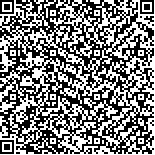本文已被:浏览 467次 下载 466次
Received:September 02, 2023 Published Online:June 20, 2024
Received:September 02, 2023 Published Online:June 20, 2024
中文摘要: 目的 检测肝病患者血清甲胎蛋白(AFP)、维生素K缺乏或拮抗剂Ⅱ诱导蛋白(PIVKA-Ⅱ)、肝纤维化4因子指数(FIB-4)和对羟基苯丙氨酸尿液检测(TUT)水平,探讨其联合检测对乙型肝炎病毒(HBV)相关肝细胞癌(HCC)的临床诊断价值。方法 选取2021年1月至2022年12月在长沙市第一医院就诊的HBV相关HCC患者50例、HBV相关良性肝病患者50例以及同期健康体检者50例作为研究对象,比较3组血清AFP、PIVKA-Ⅱ、FIB-4及TUT阳性率之间的差异,分析各指标单项检测及联合检测诊断HCC的受试者工作特征曲线下面积(AUC),评价联合检测在诊断HBV相关HCC中的临床应用价值。结果 HBV相关HCC组、HBV相关良性肝病组和健康体检组三组对象血清AFP、PIVKA-Ⅱ、FIB-4及TUT阳性率比较差异均有统计学意义(P<0.05)。HBV相关HCC组血清AFP、PIVKA-Ⅱ、FIB-4及TUT阳性率均高于健康体检组(P<0.05)。HBV相关HCC组血清AFP、PIVKA-Ⅱ及TUT阳性率均高于HBV相关良性肝病组(P<0.05),而FIB-4两组间差异无统计学意义(P>0.05)。HBV相关良性肝病组PIVKA-Ⅱ、FIB-4明显高于健康体检组(P<0.05),而AFP、TUT阳性率两组间差异无统计学意义(P>0.05)。ROC曲线分析显示血清AFP、PIVKA-Ⅱ、FIB-4、TUT单项检测的AUC分别为0.812、0.827、0.722、0.761。血清AFP、PIVKA-Ⅱ、FIB-4诊断HCC的最佳截断值分别为21.1 ng/mL、41.32 mAU/mL、3.27。单项检测TUT的灵敏度最高(82.00%),AFP的特异度最高(95.00%)。联合检测以血清AFP+PIVKA-Ⅱ+FIB-4+TUT的AUC最大(0.935),灵敏度最高(90.00%),以AFP+PIVKA-Ⅱ+FIB-4特异度最高(97.00%)。结论 血清AFP、PIVKA-Ⅱ、FIB-4及TUT联合检测可提高对HCC的诊断效能,在HCC的早期诊断中具有重要的临床价值。
Abstract:Objective To explore the clinical diagnostic value of combined serum alpha-fetoprotein (AFP), protein induced by vitamin K absence or antagonist-Ⅱ (PIVKA-Ⅱ), hepatic fibrosis 4 index (FIB-4) and tyrosine urine test (TUT) in hepatitis B virus (HBV)-related hepatocellular carcinoma (HCC). Methods Fifty patients with HBV-related HCC, 50 patients with HBV-related benign liver diseases and 50 healthy people in the First Hospital of Changsha from January 2021 to December 2022 were selected as the study subjects. The differences of serum AFP, PIVKA-Ⅱ, FIB-4, and the positive rates of TUT among three groups were compared. The area under the receiver operating characteristic curve (AUC) of individual detection and combined detection in the diagnosis of HCC were analyzed, and the clinical application value of combined detection in the diagnosis of HBV-related HCC was evaluated. Results The levels of serum AFP, PIVKA-Ⅱ, FIB-4 and the positive rate of TUT among three groups were significantly different (P<0.05). The levels of AFP, PIVKA-Ⅱ, FIB-4 and the positive rate of TUT in the HBV-related HCC were higher than those in the healthy control group (P<0.05). The levels of AFP, PIVKA-Ⅱ and the positive rate of TUT in the HBV-related HCC group were higher than those in the HBV-related benign liver disease group (P<0.05), but there was no significant difference in FIB-4 (P>0.05). The levels of PIVKA-Ⅱ and FIB-4 in HBV-related benign liver disease group were significantly higher than those in healthy control group (P<0.05), while the levels of serum AFP and the positive rates of TUT were not significantly different (P>0.05). Receiver operating characteristic (ROC) curve analysis showed that the AUC of AFP, PIVKA-Ⅱ, FIB-4 and TUT were 0.812, 0.827, 0.722 and 0.761, respectively. The best cut-off values of serum AFP, PIVKA-Ⅱ and FIB-4 for diagnosing HCC were 21.1 ng/mL, 41.32 mAU/mL and 3.27, respectively. In the single test for diagnosis of HBV-related HCC, the TUT had the highest sensitivity of 82.00% and the AFP had the highest specificity of 95.00%. In the combined test for diagnosis of HBV-related HCC, the serum AFP+PIVKA-Ⅱ+FIB-4+TUT had the maximum AUC of 0.935 and the highest sensitivity of 90.00%, while AFP+PIVKA-Ⅱ+FIB-4 had the highest specificity of 97.00%. Conclusion The combined test of serum AFP, PIVKA-Ⅱ, FIB-4 and TUT can improve the diagnostic efficacy of HCC and has a significant clinical value in the early diagnosis of HBV-related HCC.
keywords: HBV-related hepatocellular carcinoma Alpha-fetoprotein Protein induced by vitamin K absence or antagonist-Ⅱ Hepatic fibrosis 4 index Tyrosine urine test
文章编号: 中图分类号:R735.7 文献标志码:A
基金项目:湖南省卫生健康委科研计划项目(202103081037);传染病国家区域医疗中心建设项目(长财社指〔2022〕8号)
引用文本:
